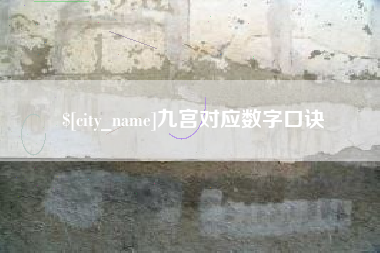孟津九宫对应数字口诀
导读:在当今的数字化时代,九宫图解法成为了解决数字和图形对应问题的有效工具。今天我们来详细介绍九宫对应的数字解答方法,让你轻松玩转数字谜题。第一部分:九宫图原理简述九宫图,也称“九宫格”,是一种古老的几何学形式,通常...
在当今的数字化时代,九宫图解法成为了解决数字和图形对应问题的有效工具。今天我们来详细介绍九宫对应的数字解答方法,让你轻松玩转数字谜题。
第一部分:九宫图原理简述
九宫图,也称“九宫格”,是一种古老的几何学形式,通常指的是一个3x3的网格。每个格子填充1至数字9,要求行、列、以及对角线上的数字之和为15。
第二部分:解题步骤分享
第一步:基础排列
首先熟悉关键的起始点和排列方式。常见的方式是将数字1至9填入,利用初步的排列组合形成一个初步框架。
第二步:确定关键数字
分析已知条件,确定几个格子的数值。例如,若有一行已知几个数字,可利用这些条件逐步排除其他位置的可能数值。
第三步:通过逻辑分析优化
利用行、列之和为15的规律,逐步调整数字的位置。如果某一行的数字有重复开黑1或者遗漏,可验证其他行并给予调整。这一过程需逻辑严密,逐步逼近正确答案。
第三部分:技巧分享与策略
- 避免重复和遗漏
在排列过程中要确保每一行、每一列的数目都满足条件,避免重复和遗漏任何数字。
- 对角线检查
在中期阶段合理利用对角线的关系,确保对角线之和为15的约数。
- 逐步验证
不断总结并验证当前排列是满足规则的,通过一个初步的验证步骤减少后续调整难度。
- 灵活调整
面对复杂问题不要僵化思路,灵活调整方法可达到事半功倍之效。
第四部分:加入免费领卡计划获取更多知识
如果您对数字和几何学的问题感兴趣,请加入我们的免费领卡计划:隐藏福利 加入不仅能让您学到九格更深层次知识,还将有机会获得丰富的互动资料和实践机会!
第五部分:总结和沟通策略
通过以上方法您可快速提升九宫图的理解与应用水平。参考上述各项建议及技巧,勤加练习和反思积累更多实战经验,可以不断拓宽您的数学知识能力,享受解题的乐趣和成就感!希望本文能给您带来帮助和指导。在解开数字谜题与图形魅力的时刻,轻松掌握九宫图的秘密!祝愿您数学学习作业顺顺利利!